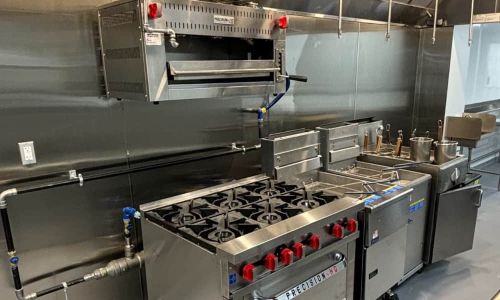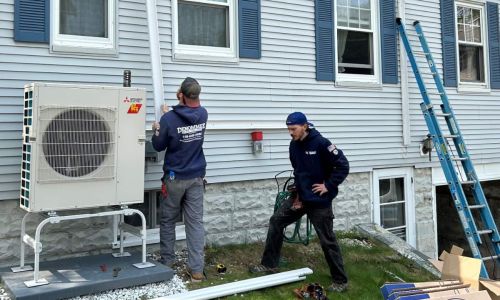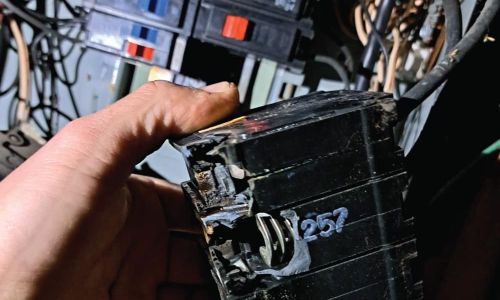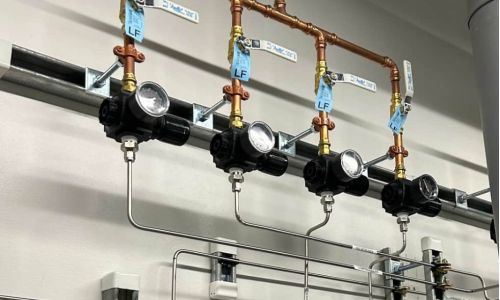Exploring Frequently Tripped Electric Circuit Breakers
What is a tripped circuit breaker?
When someone says a "circuit breaker tripped," they are referring to a safety mechanism in an electrical circuit that has been activated. A circuit breaker is a switch that automatically cuts off the flow of electricity to a circuit if it detects a problem, such as an overload (too much electrical current) or a short circuit (an unintended path in the circuit).
This is done to prevent electrical damage, fires, or other hazards. When a circuit breaker trips, it essentially "shuts off" that part of the electrical system to protect both the wiring and devices connected to it. To restore power, the breaker typically needs to be manually switched back to the "on" position, but the underlying issue (like an overloaded circuit) should be addressed first.
Homeowners should call a professional electrician, like the Denommee team, if circuit breakers keep tripping. Frequent trips of electric circuit breakers can be a sign of underlying issues in the electrical system. Circuit breakers are designed to protect your electrical system from overloads, short circuits, and other potentially dangerous conditions. When a breaker trips repeatedly, it indicates that the breaker is detecting a problem, but it can be frustrating and concerning.
Why do circuit breakers frequently trip?
Here are some common reasons why the local electric pros at Denommee Plumbing, HVAC & Electric suggest this might be happening:
Overloaded Circuit
Cause: This is one of the most common reasons for a breaker to trip. An overload occurs when the circuit is drawing more current than it was designed to handle.
Example: Plugging too many devices into a single outlet or running high-wattage appliances (like space heaters or air conditioners) on the same circuit.
Solution: Try redistributing the load by plugging devices into different outlets, or consider adding more circuits to the area.
Short Circuit
Cause: A short circuit occurs when a live wire touches a neutral wire or a ground wire, causing a large surge of current to flow through the circuit.
Example: Faulty wiring, damaged insulation, or a problem in an appliance.
Solution: If a short circuit is suspected, turn off all appliances and unplug them. Call an electrician to inspect and repair any wiring issues.
Ground Fault
Cause: A ground fault occurs when the hot wire (live wire) comes into contact with a ground wire or any grounded surface.
Example: This can happen when wires become damaged or loose, or when moisture or other conductive materials come into contact with the wiring.
Solution: A Ground Fault Circuit Interrupter (GFCI) may trip in these cases, and the issue should be inspected by a professional.
Faulty Circuit Breaker
Cause: Over time, circuit breakers can become worn out or faulty. If a breaker is old, it might trip even when there isn't an overload or fault in the circuit.
Solution: If the breaker trips constantly without apparent reason, it might need replacement. An electrician can assess whether the breaker needs to be replaced.
Loose Wiring Connections
Cause: Loose connections at outlets, switches, or within the breaker panel can cause intermittent tripping. This can also lead to overheating or sparking.
Solution: Have an electrician inspect and tighten any loose connections. This is important for preventing further damage and reducing the risk of fire.
Aging or Overheated Wiring
Cause: As wiring ages, it can degrade and become more susceptible to damage. Old or improperly installed wiring may not be able to handle the electrical load, leading to tripping.
Solution: Consider rewiring the affected circuits, especially in older homes. This is a significant job that requires a licensed electrician.
Incompatible Appliances
Cause: Some appliances might draw more current than anticipated or might have defects that cause them to short or overload a circuit.
Example: A malfunctioning appliance that keeps pulling excessive current could trigger a breaker to trip.
Solution: Test appliances one by one to see if a specific device is causing the trips. If an appliance is faulty, have it repaired or replaced.
Environmental Factors
Cause: Sometimes, external factors like humidity, water leakage, or extreme temperatures can cause issues with circuits, especially in older or improperly maintained wiring systems.
Solution: Ensure the area around the electrical wiring is dry and that any leaks or external conditions are addressed promptly.
Incorrectly Sized Breaker
Cause: If the breaker installed is too small for the circuit, it might trip even under normal operating conditions.
Solution: An electrician can assess if the breaker is the appropriate size for the circuit and replace it if necessary.
What can homeowners do?
Identify the problem: Start by unplugging devices and see if the breaker still trips. This can help you figure out if it’s an overloaded circuit or a problem with a specific appliance.
Check for visible damage: Look for exposed wires, scorch marks, or signs of overheating around outlets, switches, or in your breaker panel.
Call a professional: If you can't determine the cause or if you suspect a more serious issue (such as faulty wiring or a malfunctioning breaker), contact a licensed electrician. Electrical problems can be dangerous if not properly handled.
In any case, frequent trips should never be ignored, as they can indicate safety risks such as the potential for electrical fires. Denommee Plumbing, HVAC & Electric offers prompt, professional electric circuit breaker repair services with upfront, quoted flat rates. Our licensed electricians can be relied upon to safely and efficiently restore proper circuit breaker operation to local code compliance and complete customer satisfaction. Request our electric services by calling us or visiting www.denommeeplumbing.com




